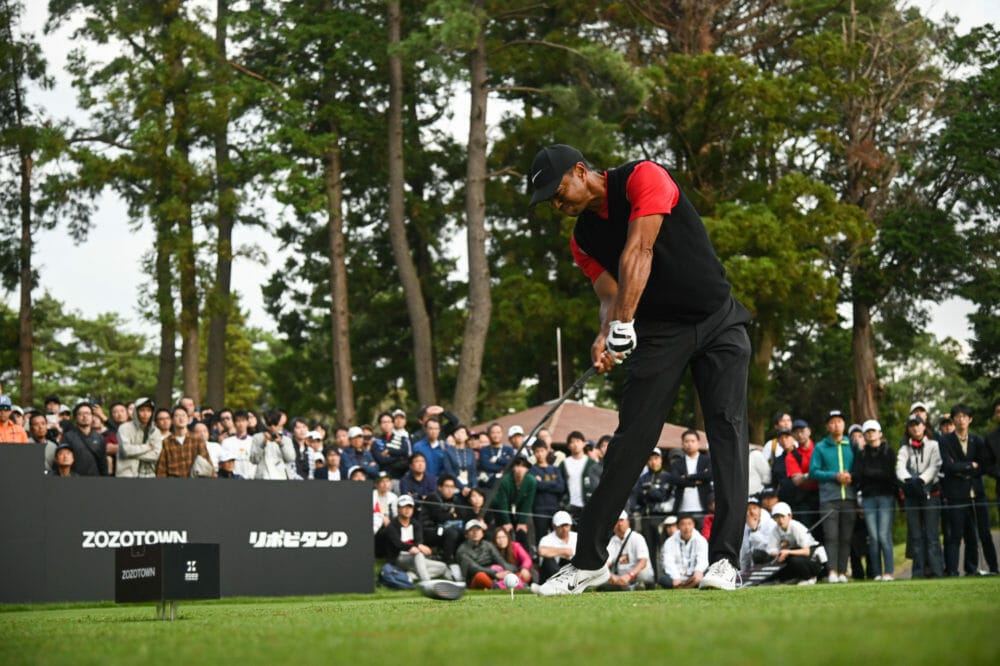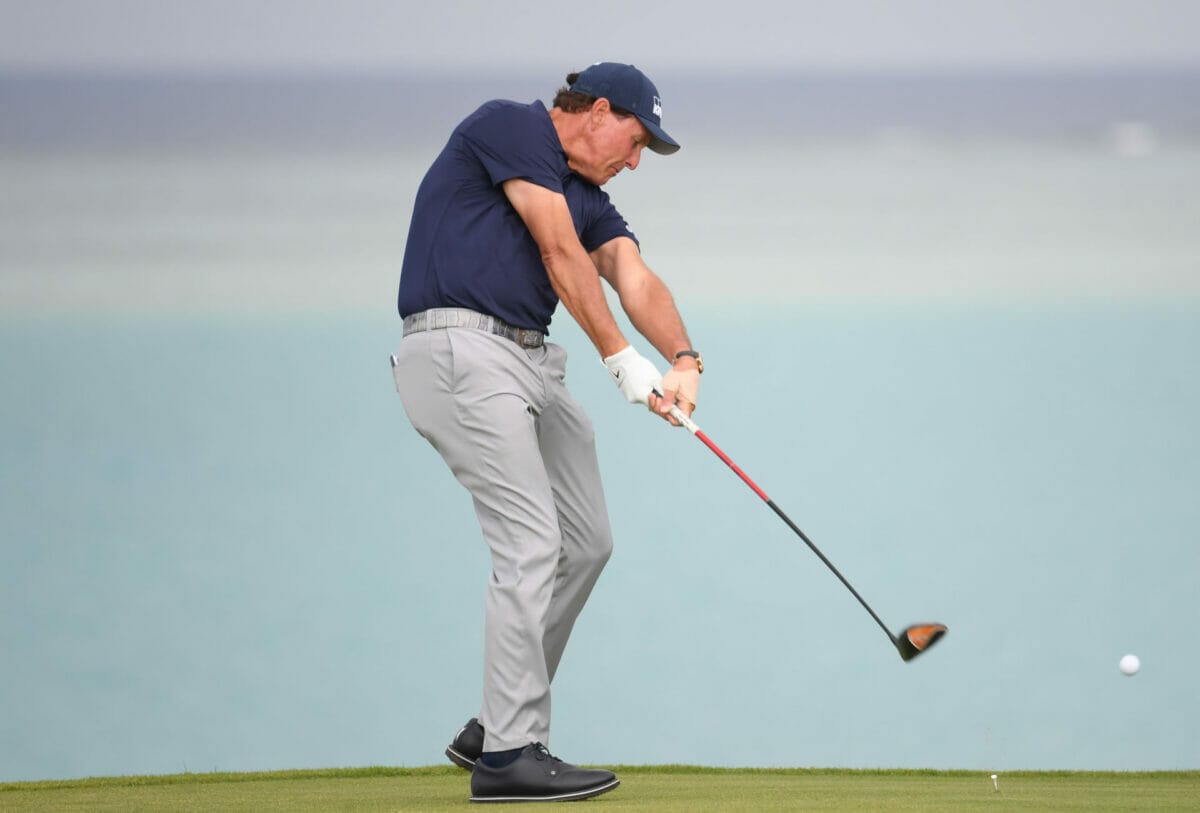Awash with noble sentiments and an overkill of data, the long-awaited report into excessive distance jointly published by the R&A and USGA is unambiguous in stating that the future of the game as a whole will be under an existential threat if it is allowed to continue unabated.
The amount of land and water required for the set up and maintenance of a modern golf course is clearly unsustainable while the traditional multi-skilling once required to become an expert player has been eroded and diminished. Golf just ain’t what it used to be!
As well as protecting the integrity of golf courses, The R&A and USGA appear to want a radical shift away from the power game in order to give golfers with other skills a fairer chance of success:
“The game should depend on a golfer’s skill and judgment in choosing among 14 different clubs for tee shots, long and short approach shots, bunker shots, pitching, chipping, putting and a wide variety of recovery shots. This involves many elements of skill, such as hitting distance, distance control, accuracy, shape of shot, trajectory, spin, bounce and roll, and how to play from all types of lies.
“The player needs to use his or her imagination and judgment in making strategic choices about which type of shot to play among the many options that differ in style, difficulty and risk/reward potential. Being challenged to display this wide range of skills is part of golf’s essential character, giving players of very different sets of abilities and relative strengths and weaknesses a chance to compete and succeed.”
The amateur ruling bodies who control 99% of the game while the professional tours, who make up less than 1% of its participants, seem to appreciate they must proceed with caution in attempting to persuade the interests of a vast manufacturing industry with annual sales worth $2.6-billion, into abandoning their 100-year old marketing slogan of continually promising to satisfy the irresistible ‘consumer want’ of more distance and, instead, try to get them to agree to curtailing it. Why would they do that you might well ask?
It’s simple. Controlling excessive distance is crucial to the future viability and welfare of everyone who plays the game, be it for recreation or a living.
It’s predictable to hear some touring golf pros who play golf for a living whining about little inconveniences without any thought for the well-being of the total game; thinking only about what affects themselves and their pockets while appeasing their golf manufacturer sponsors whose only reason for being is to sell their products and make money. The R&A and USGA have far higher ideals in mind.
The ubiquitous Phil Mickelson is already in the forefront opposing change. On the golf course, he gives the impression of being obsessed by power. As he gets older, he swings the club faster and faster and faster. It did not do him any good during the final round of the AT&T at Pebble Beach in the first weekend in February where his game came off the rails spectacularly and he ‘blew’ an excellent chance of victory.
Phil’s reasoning on distance is not coherent: “Yeah, I don’t know. I didn’t really read anything tangible from the report. I only saw that they didn’t want each generation to continue getting longer and longer. I don’t feel that you should punish the athletes for getting better.
“I don’t think that we have had massive equipment changes. We have just had athletes that have been able to take advantage of the equipment more so than in the past. I don’t really understand the whole scope of how it affects the game and how it affects agronomy and golf courses and so forth, so I’m not sure I’m the best one to comment on it.”
Professionals in every sport these days are bigger, stronger, faster and better prepared than ever but their playing fields are not continuously expanded. It is also true to say that in all ball and stick games (including golf) equipment is controlled by strict rules. The big difference is that in golf, the legislators were passive for too long and the ball, these days, does go too far. Former US Open champion (twice), Curtis Strange, caustically tweeted that Mickelson’s driving average in 1994 (aged 24) was 273 yards whereas in 2020 (when he will reach the Big 5-0) it is 305-yards. Any 50-year old athlete outperforming his 24 y-o self is quite a feat.
Graeme McDowell is only one of a growing band of pros who agree with a rollback. After his win in Saudi Arabia, G-Mac said: When distance affects the integrity of the greatest courses in the game, where you don’t have a lot of real estate left to make changes, there’s a problem. When they moved the 17th tee at the Old Course, I was like, ‘Is that necessary?’ It’s one of the most iconic tee shots in the world. If this continues, continues, continues, and we fast forward into the future, it could become silly. I generally agree with [the project’s conclusion]. I don’t think we want to continue the way we are going. It really needs to stop somewhere.”
Padraig Harrington is of a similar opinion although what he says may not be quite what the R&A and USGA have in mind: “100-percent I support a rollback. Purely because of the cost of golf courses – their size, their maintenance, all the water required; all the costs. There are (too many) great golf courses that can’t be used anymore. Roll it back and start again,” he says.
“I would set new specifications and then let the manufacturers have another race to the top. If the ball was rolled back by 10 percent, we’d all start again and off we’d go. I’m with Titleist. It’s the best ball now, and they’re a big enough company that if they had to start from scratch, they’d be the best ball again.”
Ball limitations have been imposed before. In 1931, there was a golf ball rollback and the sky didn’t fall down or droves of golfers did not give up the game. The irony is that the 1931 ball was embraced by the pros, but vehemently rejected by recreational players.
In 1942, the USGA and R&A adopted what was called ‘the initial velocity standard’. It was a most effective limitation because driving distances remained stable until the mid-1980s when manufacturers began experimenting with innovate dimpling. Then, in the 1990s, titanium club heads paired with longer, graphite shafts sent distances skyrocketing.
In 2000, the multi-layer solid core ball entered the market and shortly after that, the Pro V-1 arrived on the scene. Through it all, those in charge at the USGA and R&A froze like rabbits trapped in headlights probably because although the pros exploited the new technology to the nth degree, it made no difference to the average golfer whose distance did not improve. Mr. Average wondered what all the fuss was about and was looking for a driver to buy that would guarantee him those extra few yards.
The bottom line is: the ball and clubs used in the 2020s are the best they have ever been and leaving aside the distance the pros achieve, the ruling bodies are just as concerned about their self-correcting properties that sees mishits flying straight instead of into the trouble deserved.
The R&A and USGA’s wish to break the distance cycle looms large between the lines in the 102-page text that ends with a Joint Statement of Principles, which bluntly states: ‘the line has been crossed’ along with a sound synopsis explaining why golf has been seriously harmed by the all-out pursuit of distance at the expense of the broad range of skills that golfers needed to be expert players up until twenty-five years ago.
It’s a stunning reversal of the way The R&A and USGA did not do their duty as ‘protectors of the game’ since the 1990s, to see the following paragraphs in black and white:
“Golf will best thrive if the continuing cycle of ever-increasing hitting distances and golf course lengths is brought to an end. Longer distances, longer courses, playing from longer tees and longer times to play are taking golf in the wrong direction and are not necessary to make it challenging, enjoyable or sustainable in the future. We will assess the potential use of a Local Rule option (a clear signal to Augusta National Golf Club that they would look kindly on the introduction of their own tournament ball; resulting in them not having to purchase expensive land and property along the course boundaries in order to lengthen the golf course every year)
“The concept is that equipment meeting a particular set of reduced-distance specifications – a ball that does not travel as far or a club that will not hit a ball as far – might be a defined subset of the overall category of conforming equipment (allowing) committees that conduct golf competitions or oversee individual courses to choose, by Local Rule authorised under the Rules of Golf, whether and when to require that such equipment be used. Such a Local Rule option could be available for use at all levels of play, and golfers playing outside of a competition could also have the option to make this choice for themselves.
“We will also review the overall conformance specifications for both clubs and balls, including specifications that both directly and indirectly affect hitting distances. The intended purpose of this review is to consider whether any existing specifications should be adjusted or any new specifications should be created to help mitigate the continuing distance increases. (Although) it is not currently intended to consider revising the overall specifications in a way that would produce substantial reductions in hitting distances at all levels of the game.”
There is no denying the first shots in what could become an all-out war have been dispatched. If, in time, it is decided that a rollback and/or bifurcation are the best ways forward, the R&A and USGA will need a signed seal of approval from as many major champions and former and current greats of the game as they can obtain to make the PGA Tour and equipment companies realise that the interests of the game as a whole are in their best interests too.
Distance is relative. Rolling back the ball and putting limits on club technology will cause some disruption and upset for a short while but then everything will settle back down again (as it did previously). The longest hitter will still be the longest hitter.
























Leave a comment